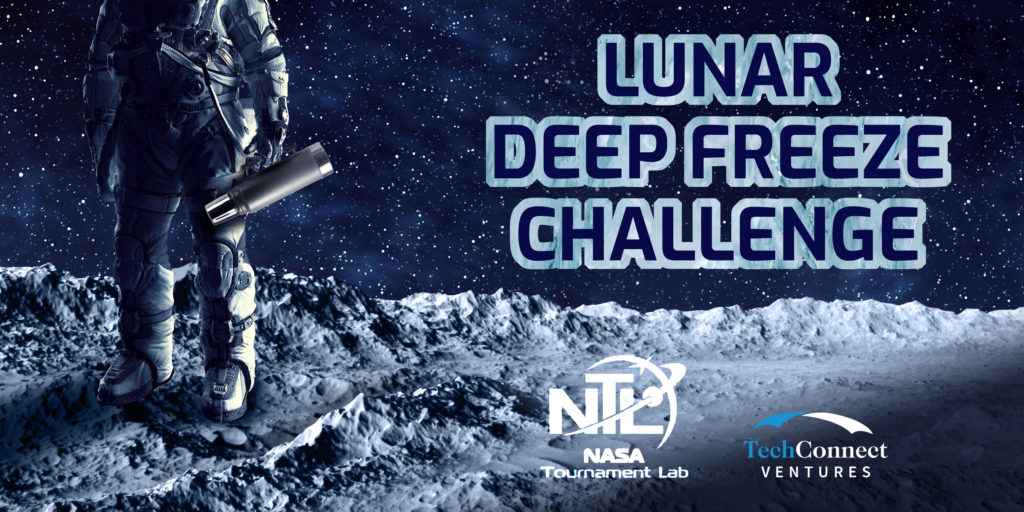
Small Transportable Cryogenic Containment Systems
Target: A small footprint system or combination of systems that enable transportation of lunar samples at constant cryogenic temperatures (-150°C or colder) across multiple NASA vehicles on the journey from the Moon to Earth. Responses should describe a cryogenic containment solution that addresses the specifications below and may include any combination of active, passive, hybrid or other completely novel technical approaches.
While NASA is primarily interested in holistic or comprehensive solutions that address the need for end-to-end cryogenic approaches across the entire journey Moon-to-Earth, there is considerable interest in approaches that can sufficiently resolve any specific segment of the process.
Proposed technologies will be evaluated against their ability to address any or all of the following specifications and success criteria:
PERFORMANCE
The proposed solution should consider the following requirements::
- Reach internal cryogenic temperatures of -150°C or lower
- Maintain stable internal temperatures of -150°C for at least 2 weeks across any/all components of the proposed approach
- Be portable, modular, install-able on multiple vehicles OR account for the process of transportation on and transfer between multiple vehicles, including:
- Human Landing System (HLS)
- More about HLS here.
- Gateway
- Note: Gateway currently has a cold plate available that can remove 400W of thermal heat over a ~0.125m2 surface at a temperature not lower than 28°C. A payload spanning two such cold plates can be integrated into the proposed approach.
- More about Gateway here.
- Orion
- More about Orion here.
- Recovery vehicles following re-entry and splashdown.
- Note: after splashdown, NASA expects to have a separate cold transportation system available for transporting the samples to a NASA curation facility.
- Human Landing System (HLS)
- Function under the following operating conditions:
- Variable gravity including lunar, micro- and terrestrial
- External temperatures of 17-25°C
- External pressures of 10.2-14.7 psi
- Launch and re-entry loads up to 10 G
- Vibration on re-entry inside the Orion capsule
- Retain and secure stored lunar sample containers without damaging, scratching, piercing, or compromising the container
- Operational within 2-3 years
DESIGN
The proposed approach should discuss its ability to address the following design specifications, including any supporting calculations, graphics or drawings:
- Maximum external dimensions of system/unit:
- Orion & HLS
- Maximum volume of 0.0625 m3
- Maximum external dimensions: 0.5m x 0.25m x 0.5m
- Orion & HLS
- Gateway
- Maximum volume of 0.125 m3
- Maximum external dimensions: 0.5m x 0.5m x 0.5m
- Internal dimensions to accommodate lunar sample container:
- Assume sample container will be a cylinder, 20cm diameter, 30 cm long
- Must support at least 1 kg of internal mass, preferably more (up to 10 kg)
- Total system/unit mass (not including samples) less than 20 kg
- If proposing multiple units or different solutions for each NASA vehicle the maximum mass limit is 20kg per vehicle.
- Operate with low (or zero) external power:
- HLS and Orion: 28V DC with maximum limit of 75 watts
- Gateway: Maximum limit of 200 Watts with both 28 V DC and 120V DC power feeds available
- Cooling systems
- Different approaches possible including
- Passive cooling
- Active cooling (air-cooled ONLY*)
- Hybrid approach
- Combination of approaches
- Note: Gateway has cold plate available that can remove 400W of thermal heat over a ~0.125m^2 surface at a temperature not lower than 28 C. The payload could span two cold plates for additional thermal capability.
- Different approaches possible including
- Be safe for use in an interior, enclosed, crewed environment:
- No use of hazardous materials
- No venting of any kind
- No hazardous emissions, byproducts or pollutants
- For active and mechanical systems, operate at decibel levels under NC-34 limits
POSSIBLE APPROACHES
NASA believes that a wide range of possible solution pathways may exist to solve this Challenge, including – but in no way limited to:
- A single, portable, and vehicle-agnostic solution.
- A combination of vehicle-specific approaches that provide cryogenic containment at each stage from HLS to Earth.
- Long-term passive or non-powered containment solutions, such as replaceable, reusable, or rechargeable cryogenic materials or units.
- Unique combinations of active, passive and/or other cryogenic solutions.
- Robust approaches that can address a single step in the Moon to Earth transit:
- Stowage on HLS for up to 2 days
- Transfer from HLS to Gateway
- Stowage on Gateway for up to 5 days
- Transfer from Gateway to Orion
- Stowage on Orion for up to 6 days.
EVALUATION
Scoring by the judging panel has been calibrated for the above criteria according to the descriptions provided in the category 1 evaluation criteria and will consider the nature of the proposed approach, potential for NASA applications, proposal quality, safety, maturity and/or novelty of the solution.
AWARD
Awards include:
- Total prize pool of US$20,000 available in the form of two (2) US$10,000 winners.
- Winners recognized through published announcements and individual profiles.
- A virtual conference with one or more members of the NASA Challenge team to discuss your winning solution.
Winners may also have the opportunity for future collaboration with NASA.